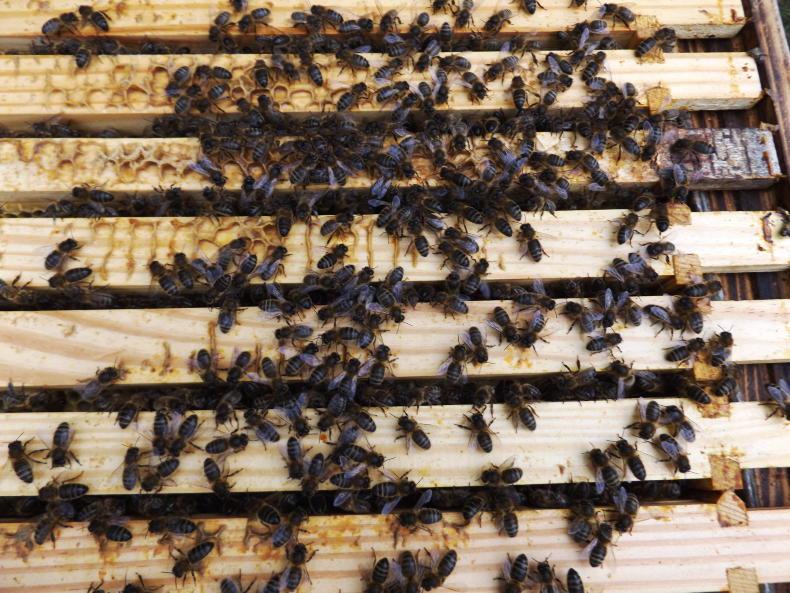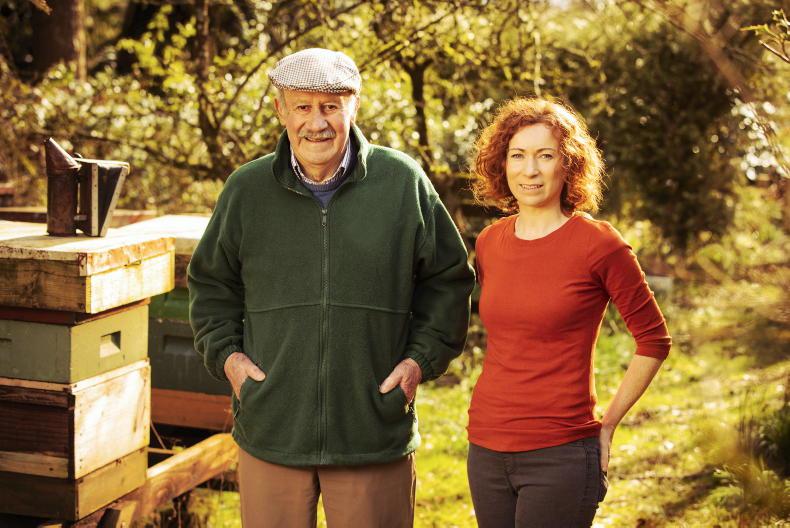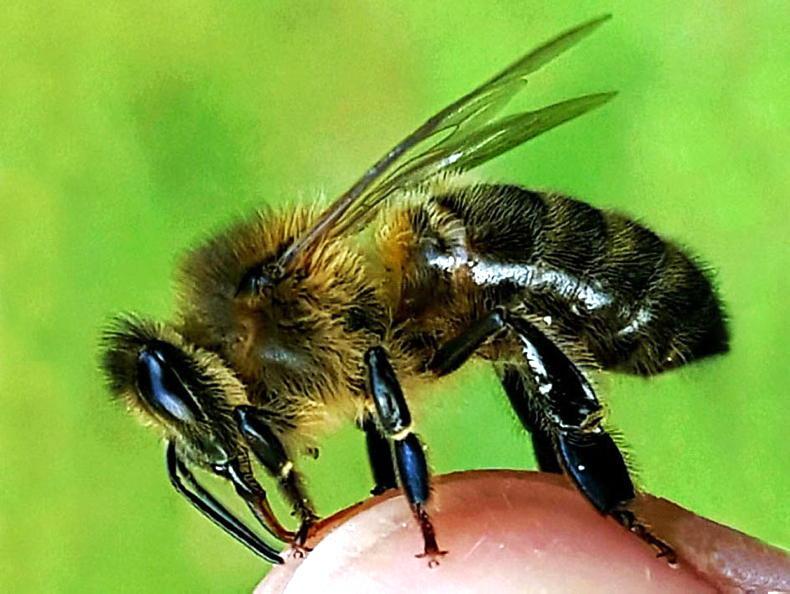Last autumn, beekeepers prepared their hives for the winter by feeding them sugar syrup where needed.
Alongside this were also checks for any diseases and ensuring that the queen of the hive was still present and in lay. Bees born from that time of year are the ones that will carry the colony through the winter and early spring.
Honeybees need every assistance to get them successfully through these months of cold and damp conditions. In most cases, the bees did not need any extra feeding last autumn, since they had brought in a lot of stores after the main honey crop was removed. The year was exceptional in that regard.
Beekeepers are now monitoring their colonies for sufficient stores, since we are at the time of year when they can run out very quickly, which usually results in the death of the colony. Bee colonies will be producing some brood, placing extra demand on existing honey stores. In cases where the hive is very light (which can be assessed by lifting it from the back with one hand), it may be necessary to feed them some fondant. Fondant should be placed immediately above the bees. Only when the temperatures increase in late spring can beekeepers give sugar syrup for emergency feeding.
Colonies
Thankfully, most honeybee colonies are still heavy with stores from last autumn. While this is naturally good news, there are – or may be – some difficulties arising from it. As mentioned above, brood is being reared in the hive. This requires available honeycomb with substantial areas of empty cells where the queen can lay her eggs. However, in cases where the bees filled all their available combs with honey last autumn, they may not have used sufficient stores over the winter to free up empty cells. In beekeeping terms, this is known as ‘stores locking’. The net result is that there is no place for the queen to lay her eggs, the effects of which will be seen later when an insufficient number of bees are available as the year progresses. To resolve this, beekeepers need to remove frames of stores and, if possible, replace them with frames of empty honeycomb. It may be necessary to scrape the cappings on some of the frames of honey to get bees to utilise it and, in so doing, free up cells for the queen to lay.
Plan
Every beekeeper should by now have formulated their plan for the year; though things can change rapidly in beekeeping.
There are many beekeeping associations with members who are also members of the Native Irish Honeybee Society. These groups are involved in rearing native queens of Apis mellifera mellifera. Many associations in the last year committed themselves to establishing conservation areas for our native bee. Our native bee is in pure form here in Ireland, but still faces challenges due to imports of non-native honeybees.
Last year, imports of non-native bees increased dramatically, which is alarming. There is only a single thread holding our native bee in its pure state now. The gates allowing imports of non-native bees are still open, but who will get them closed before we lose this bee? You know what they say about ‘a stitch in time saves nine’ (although, in this case, it might be more than nine...). It will likely be better to act now, than to leave such a problem to grow and branch into multiple additional problems later.
Read more
Beekeeping: Some thoughts on getting started
A hive of activity on Tykillen Farm
Last autumn, beekeepers prepared their hives for the winter by feeding them sugar syrup where needed.
Alongside this were also checks for any diseases and ensuring that the queen of the hive was still present and in lay. Bees born from that time of year are the ones that will carry the colony through the winter and early spring.
Honeybees need every assistance to get them successfully through these months of cold and damp conditions. In most cases, the bees did not need any extra feeding last autumn, since they had brought in a lot of stores after the main honey crop was removed. The year was exceptional in that regard.
Beekeepers are now monitoring their colonies for sufficient stores, since we are at the time of year when they can run out very quickly, which usually results in the death of the colony. Bee colonies will be producing some brood, placing extra demand on existing honey stores. In cases where the hive is very light (which can be assessed by lifting it from the back with one hand), it may be necessary to feed them some fondant. Fondant should be placed immediately above the bees. Only when the temperatures increase in late spring can beekeepers give sugar syrup for emergency feeding.
Colonies
Thankfully, most honeybee colonies are still heavy with stores from last autumn. While this is naturally good news, there are – or may be – some difficulties arising from it. As mentioned above, brood is being reared in the hive. This requires available honeycomb with substantial areas of empty cells where the queen can lay her eggs. However, in cases where the bees filled all their available combs with honey last autumn, they may not have used sufficient stores over the winter to free up empty cells. In beekeeping terms, this is known as ‘stores locking’. The net result is that there is no place for the queen to lay her eggs, the effects of which will be seen later when an insufficient number of bees are available as the year progresses. To resolve this, beekeepers need to remove frames of stores and, if possible, replace them with frames of empty honeycomb. It may be necessary to scrape the cappings on some of the frames of honey to get bees to utilise it and, in so doing, free up cells for the queen to lay.
Plan
Every beekeeper should by now have formulated their plan for the year; though things can change rapidly in beekeeping.
There are many beekeeping associations with members who are also members of the Native Irish Honeybee Society. These groups are involved in rearing native queens of Apis mellifera mellifera. Many associations in the last year committed themselves to establishing conservation areas for our native bee. Our native bee is in pure form here in Ireland, but still faces challenges due to imports of non-native honeybees.
Last year, imports of non-native bees increased dramatically, which is alarming. There is only a single thread holding our native bee in its pure state now. The gates allowing imports of non-native bees are still open, but who will get them closed before we lose this bee? You know what they say about ‘a stitch in time saves nine’ (although, in this case, it might be more than nine...). It will likely be better to act now, than to leave such a problem to grow and branch into multiple additional problems later.
Read more
Beekeeping: Some thoughts on getting started
A hive of activity on Tykillen Farm









SHARING OPTIONS